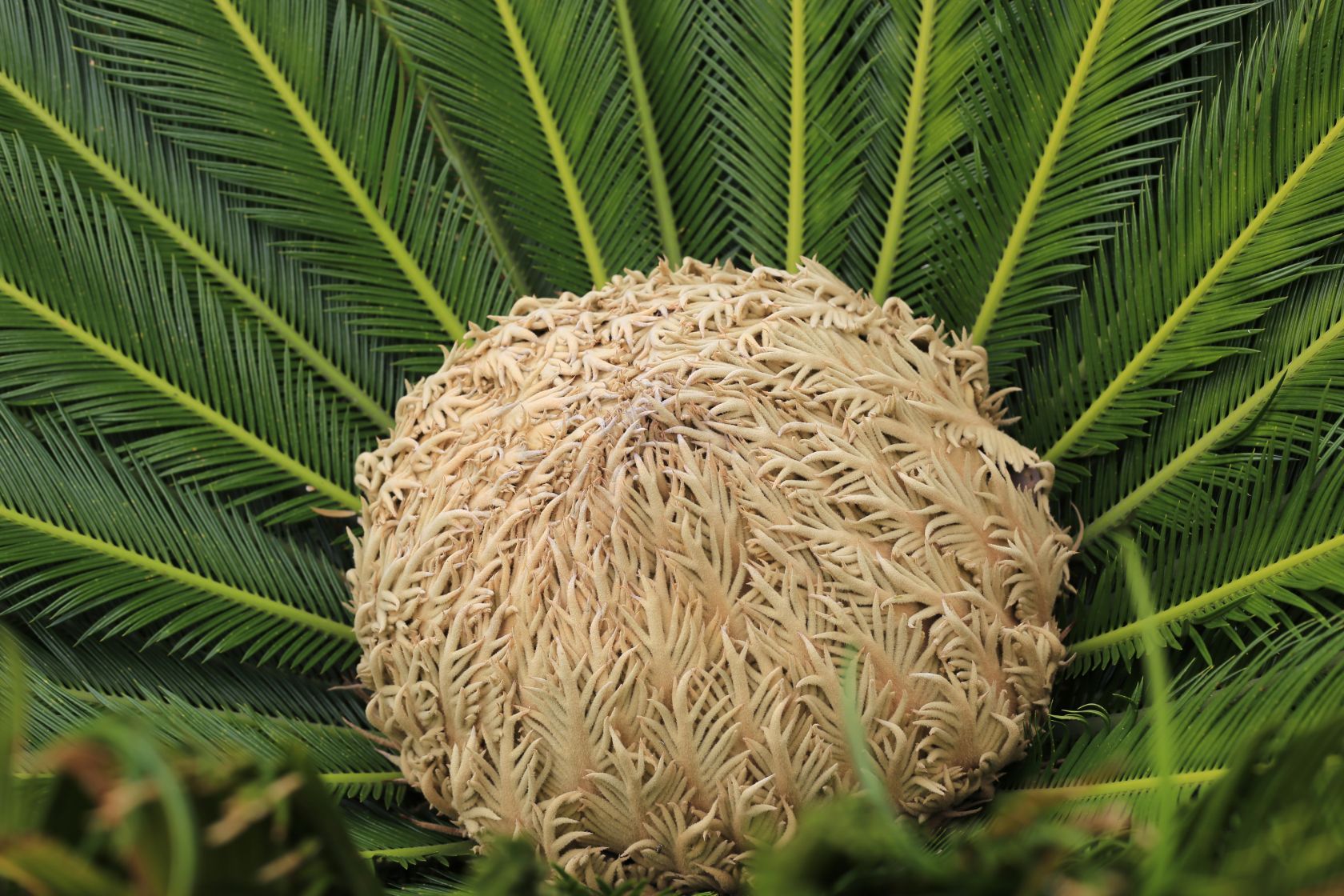I remember a sloppy white milky pudding, we youngsters called it ‘frog spawn’, and you either loved it with a dollop of jam or were revolted by it. It was known as Tapioca Pudding or Sago Pudding, but there are subtle differences, though we didn’t know it at the time.
Sago seeds, or sago ‘pearls’, are similar to tapioca’ pearls’ and can often be confused as the same product. The so-called ‘pearls’ are made by dropping the wet starch onto a hotplate where it dries into small balls – and both look identical.
However, Sago is extracted from the centre, or the pith, of the tropical Sago Palm and Tapioca, comes from the root of the cassava plant, both have a soft, light and chewy texture.
Sago
The sago palm looks like a relatively small low-growing palm tree with glossy, stiff fronds that grow out in a rosette pattern, but they aren’t palm trees at all but are cycads. They only bloom once every three to four years with the male flower resembling a cone, the female a dull, short, furry – well, fluffy thing, with some gardeners finding them both unattractive.
New growth starts out with bronze, feather-like foliage in a symmetrical ring of leaves. Then, as a leaf grows, you'll also notice protective spikes, similar to that of a cactus. Sago is extracted from the pith of their stems and is a staple food for the people in New Guinea and the Spice Islands. The Southeast Asian region, especially Indonesia and Malaysia, are the largest sago suppliers, and they send large quantities of it to North America and Europe. Sago is eaten in various ways mixed with boiling water, rolled into balls, and can be used in making fish sausages, noodles, steamed puddings, biscuits, pancakes, and white bread.

Uses for Sago
Sago can be made into a dessert, by combining sago pearls with either water or milk and adding sugar or additional flavourings. Sago is also used in textile production, to treat fibre in a process known as sizing. In weaving, it is applied to the warp yarn on a loom and is essential to reduce breakage as it improves the strength and abrasion resistance of the yarn. It has also been developed to produce acid-free, eco-friendly and bio-degradable paper, and paper products from any wood pulp are strong and relatively coarse. Sago paper was tested and found suitable for cardboard or gift boxes, and was found to be good for making envelopes, notebook covers, etc. The quality of bleached sago craft paper also fulfilled all the attributes required for watercolor painting.
Tapioca
Tapioca is made with starch from cassava roots, a key difference from the pith of the Sago Palm. Cassava has a global production of about 160 million tons per year, most of which is grown in West Africa and the Congo basin, tropical South America and Southeast Asia. The plant was introduced by the Portuguese to Asia, Africa, and the West Indies. The name ‘tapioca’ was derived from the Tupi language of Southeast Brazil, the word ‘tipi’óka’, meaning ‘sediment’ or ‘coagulant’, which refers to the curd-like starch sediment obtained in the extraction procedure. Native to the north and central-west regions of Brazil, it has now spread to South America and is also used in Indian cooking.

Uses for Tapioca
Tapioca is rich in carbohydrates and but low in vitamins, proteins and minerals. It is used as a thickening agent when making various food items like soups, pie fillings, stews, puddings and baking goods. Tapioca pudding, as well as bubble tea drinks (which I had never heard of, but are basically a quirky snack and drink in one) are made using tapioca balls, and are world-famous. The balls are chewable and are neutral-tasting, with colours and flavours artificially added. Tapioca starch is gluten-free, and is largely used to make gluten-free food items and in chewy candies, and also used as a stabiliser and binder in making food items like chicken nuggets. In Southeast Asia, tapioca is available as cooked tapioca balls, but in other areas, it is sold in the dried form and needs to be boiled before use.
Marilyn writes regularly for The Portugal News, and has lived in the Algarve for some years. A dog-lover, she has lived in Ireland, UK, Bermuda and the Isle of Man.
















